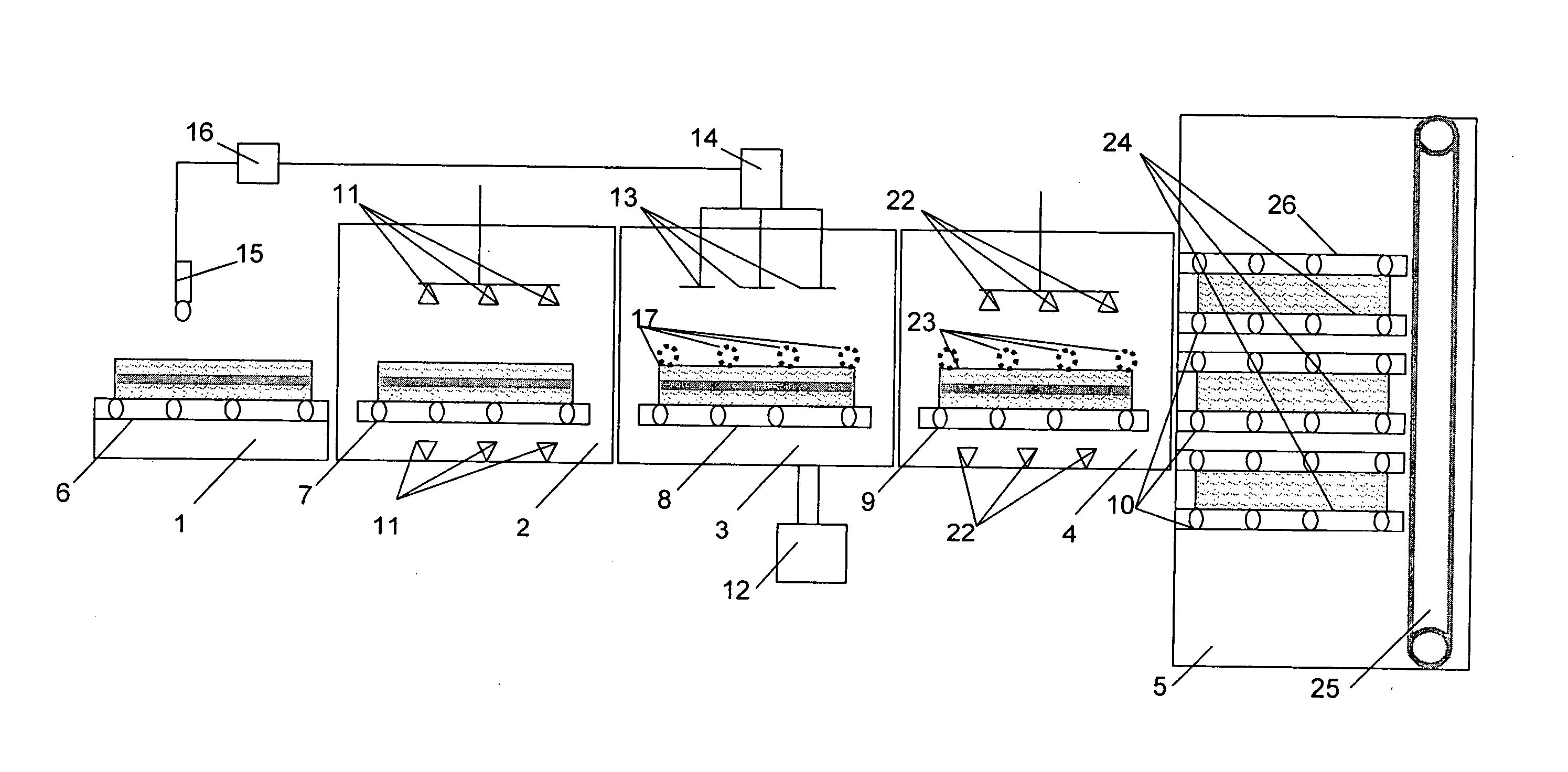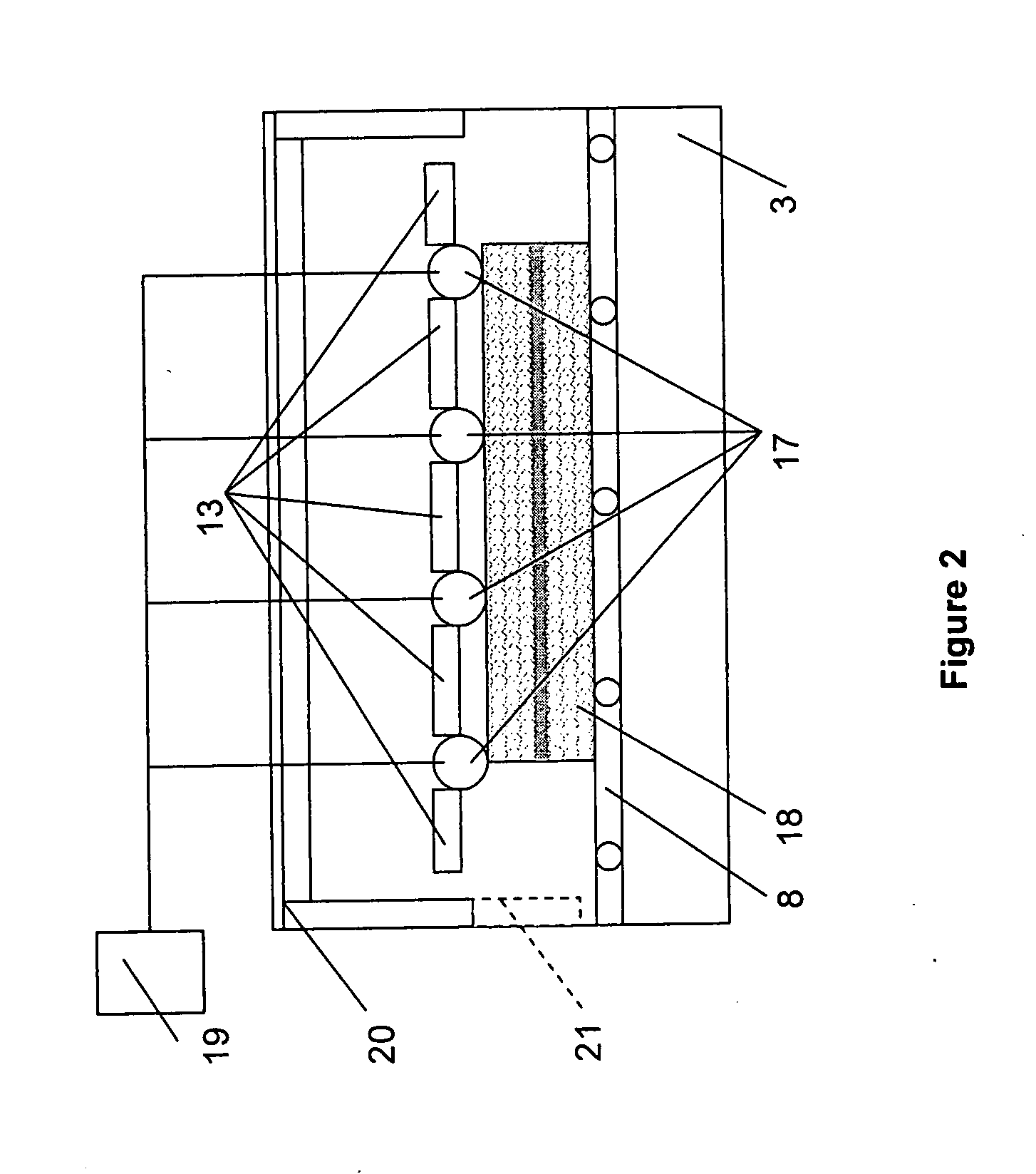Method and apparatus for laminating glass sheets
a technology of glass sheets and laminating sheets, applied in the direction of chemistry apparatus and processes, manufacturing tools, glue vessels, etc., can solve the problems of air trapped between the film and the glass surface, the rest of the air must be removed, so as to reduce the manufacturing cost, increase the production rate, and increase the production yield
- Summary
- Abstract
- Description
- Claims
- Application Information
AI Technical Summary
Benefits of technology
Problems solved by technology
Method used
Image
Examples
Embodiment Construction
[0033] The present invention relates to a method of laminating frangible materials, preferably glass articles, without using autoclave type furnaces.
[0034] The invented method comprises the assembly of a sandwich structure consisting of at least two glass articles separated by, and in contact with, at least one laminating film (usually this is plasticized polyvinyl butyral known as PVB). The at least one selected area of resulting sandwich is preheated first to a temperature of approximately 55 C0 to approximately 75 C0 by a convectional heat source, for example, hot air. The preheating temperature is selected to be lower than the temperature under which the film can be stacked to the glass.
[0035] After preheating the sandwich structure is subjected to a vacuum and it is irradiated first by electromagnetic radiation. When the preheated assembled sandwich is placed in a vacuum, pressured, and irradiated by electromagnetic radiation, the following processes take place. In the beginn...
PUM
| Property | Measurement | Unit |
|---|---|---|
| Pressure | aaaaa | aaaaa |
| Electric charge | aaaaa | aaaaa |
| Fraction | aaaaa | aaaaa |
Abstract
Description
Claims
Application Information
 Login to View More
Login to View More - R&D
- Intellectual Property
- Life Sciences
- Materials
- Tech Scout
- Unparalleled Data Quality
- Higher Quality Content
- 60% Fewer Hallucinations
Browse by: Latest US Patents, China's latest patents, Technical Efficacy Thesaurus, Application Domain, Technology Topic, Popular Technical Reports.
© 2025 PatSnap. All rights reserved.Legal|Privacy policy|Modern Slavery Act Transparency Statement|Sitemap|About US| Contact US: help@patsnap.com



